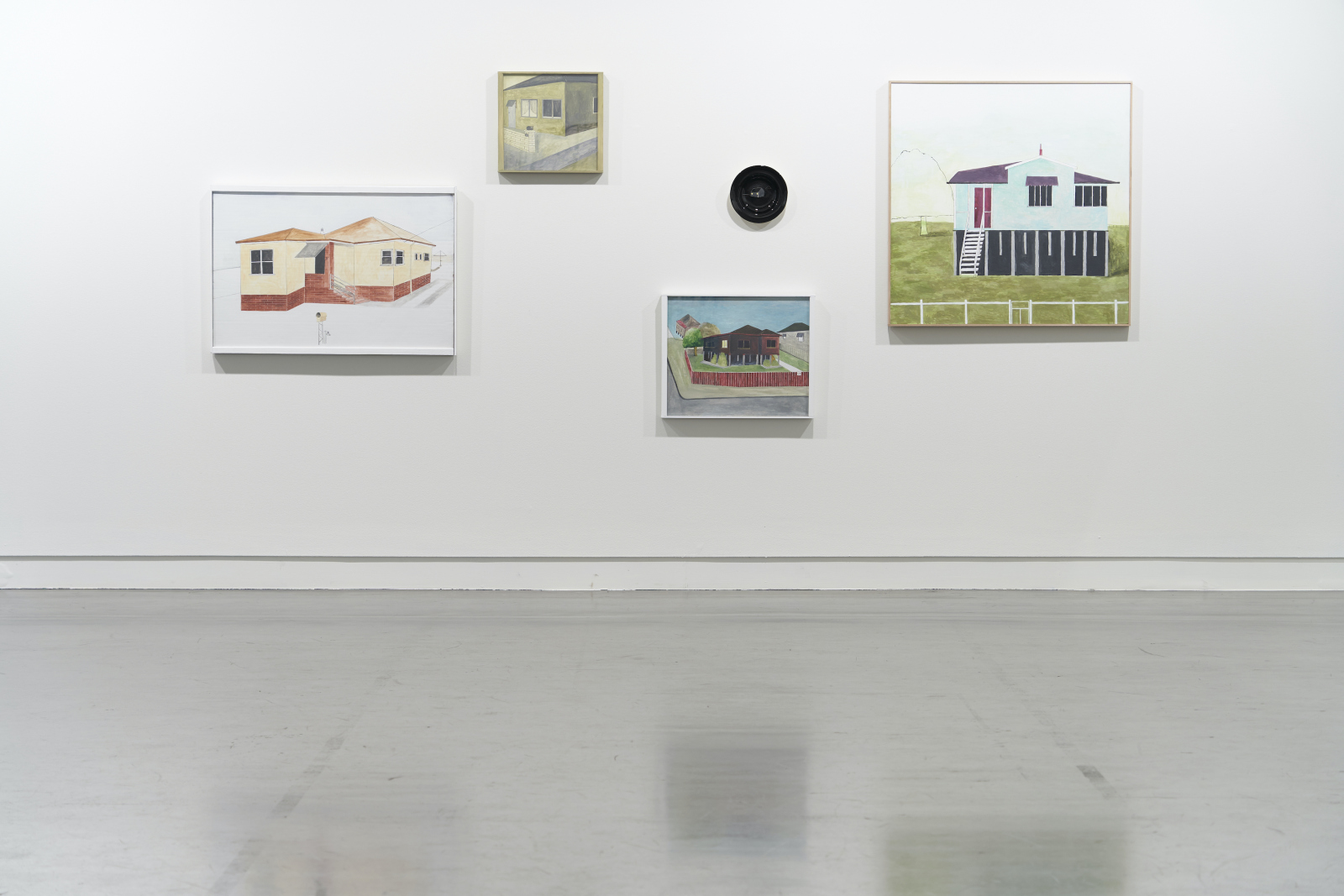Submitted Review
‘What of it if Going Home would be better titled Going House?’
Going Home
Same, same, different
In what is roughly an annual break from solo exhibitions this month Adelaide-based Hugo Michell Gallery has brought six artists together into a curated exhibition on the theme of domestic architecture. Noel McKenna, Eliza Gosse, Katherine Hattam, Kate Ballis, Elvis Richardson and Paul Davies are based in Sydney and Melbourne; two with strong ties to California. Only one, Elvis Richardson, is represented by the gallery.
Commercial galleries – or commercial contemporary art spaces – as they refer to themselves these days work hard to put a roof over their head and those of their represented artists. In the face of dynamic market conditions and fluctuating consumer confidence they are necessarily inventive; shows like this one are a case in point.
What of it if Going Home would be better titled Going House? Or that in-situ, through no fault of their own the selected works are casualties of obvious curating, look dull and flat?
I’m not here to kvetch. I live in a small regional centre and I’m grateful for news. That includes the opportunity to view new work shown in an environment of affable hospitality.
Aside from Katherine Hattam’s large canvases of vistas that situate the viewer inside looking out, works represented in the assembled paintings and photographs are building facades.
Noel McKenna’s front-on paintings of derelict, down at heel and time worn Queenslanders, including that childhood home of former Prime Minister Paul Keating, convey a sense a striking even, uncanny familiarity through a command of the vernacular. A curled cat on a brick fence is the sole sign of life.
Eliza Gosse’s slick paintings of mid century modern facades offer a reassuring blankness in which the building itself is tamed through a narrow tonal expression into a fetishistic interplay of surfaces and materials. The addition of a rear or side view of vintage and older model cars in each painting lends them a truly formulaic quality as though modelled on the instructions issued by a realtor.
Paul Davies is represented by a single canvas of an imposing two story mid century house framed by towering trees and their reflection in the swimming pool. The intricate paint surface is built up in icy pastels by the use of a stencil. Stately, imposing and isolated it celebrates hyper masculinity by utilising techniques – a colour palette, the decorative – historically associated with the ‘feminine’.
Kate Ballis, tucked away in a side gallery, has photographed the buildings around Palm Springs, California using infrared technology that renders the images in strong Barbie hues. The most directly commercial in appeal Ballis’ photographs of bessa brick walls, butterfly roof lines and hotel signage are eerily still, as though documenting a post human world. Death Valley, California, a mere 500 km away, recorded the highest temperatures on Earth last week.
Elvis Richardson’s powder coated candy pink gate is the one sculptural object in the exhibition. Its decorative curls and the word OCCUPATION and flags inscribed with the word settlement is both deliberately cute and cutting. Gates are a blunt marker of land boundaries. Fixating on the domestic scale, Richardson’s piece alludes, with a surprising degree of force, to historical processes of Aboriginal land dispossession.
The task for commercial galleries – presenting works for sale – can be at odds with what constitutes an interesting exhibition. Hanging same with same offers a clear directive to collectors but not necessarily to viewers looking for a thoughtful, engaging show.
In Katherine Hattam’s four paintings figure and ground appears collapsed – or expanded, if you like – into a psychological space where objects such as a phone, laptop, glasses and book titles are anchored by a window frame. The vistas hold a range of pictorial possibilities: language, native flora and fauna, water views that examine the contours of interiority. Hattam’s paintings offer a conception of home and place that acknowledges the life and forces of an ecosystem. It was a welcome, markedly different, perspective.
AZ
Anna Zagala
- Paul Davies, Framed in open plan, 2019.
- Katherine Hattam, Woman’s Consciousness Man’s World, 2020.
- Elvis Richardson, Settlement #4, 2021.
- Installation including Noel McKenna, Dark Queenslander, 2021.
- Kate Ballis, Sanctuary, 2018.
- Installation including Eliza Gosse, They adored their house on Mugga Way, 2021.
Sam Roberts Photography











No Comments